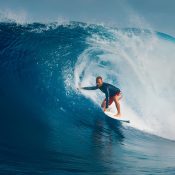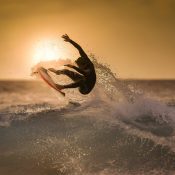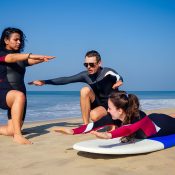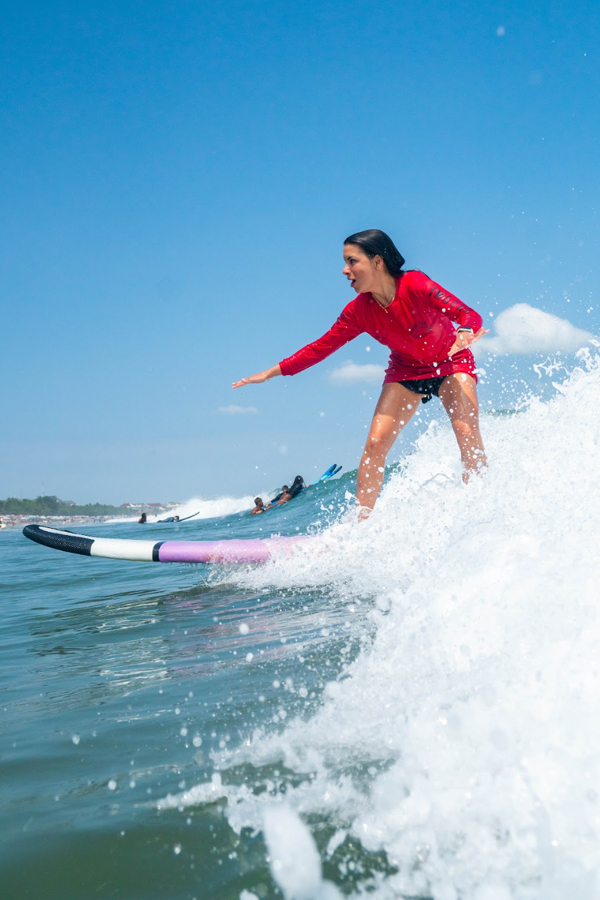The Ultimate Guide to Bali Surf Spots: Maps, Seasons & Breaks
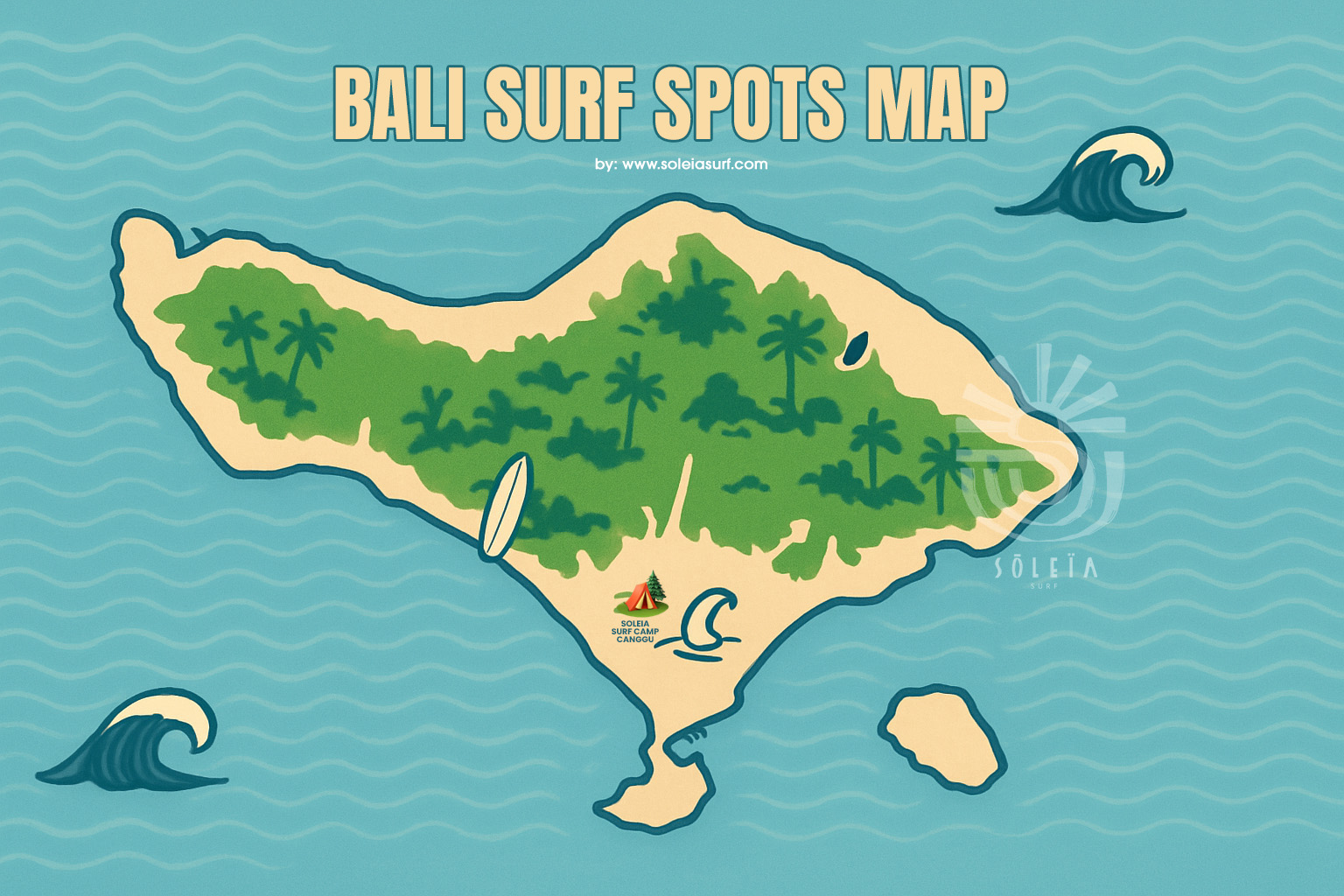
The Ultimate Guide to Bali Surf Spots: Maps, Seasons & Breaks
With over 50 world-class breaks scattered around its coastline, Bali is nothing short of a surfing mecca. But with this abundance of waves comes a crucial question: where should you actually surf?
This guide cuts through the noise. We provide everything you need to find your perfect wave—from detailed maps and break descriptions to seasonal secrets and local tips. Whether you're a first-time beginner or a seasoned tube-rider, consider this your blueprint for surfing Bali.
1. Understanding Bali's Surf Geography
The Two Coasts: Bukit Peninsula vs. East Bali
Bali's surfing is dominated by two main areas, each with distinct characteristics:
| Feature | Bukit Peninsula (South) | East Coast (Canggu/Sanur) |
|---|---|---|
| Wave Type | Powerful reef breaks | Beach breaks, softer reefs |
| Crowds | Heavy at famous spots | Moderate to heavy |
| Best Season | Dry Season (Apr-Oct) | Wet Season (Nov-Mar) |
| Skill Level | Intermediate to Expert | Beginner to Intermediate |
| Vibe | Competitive, performance | Social, relaxed |
Interactive Bali Surf Map
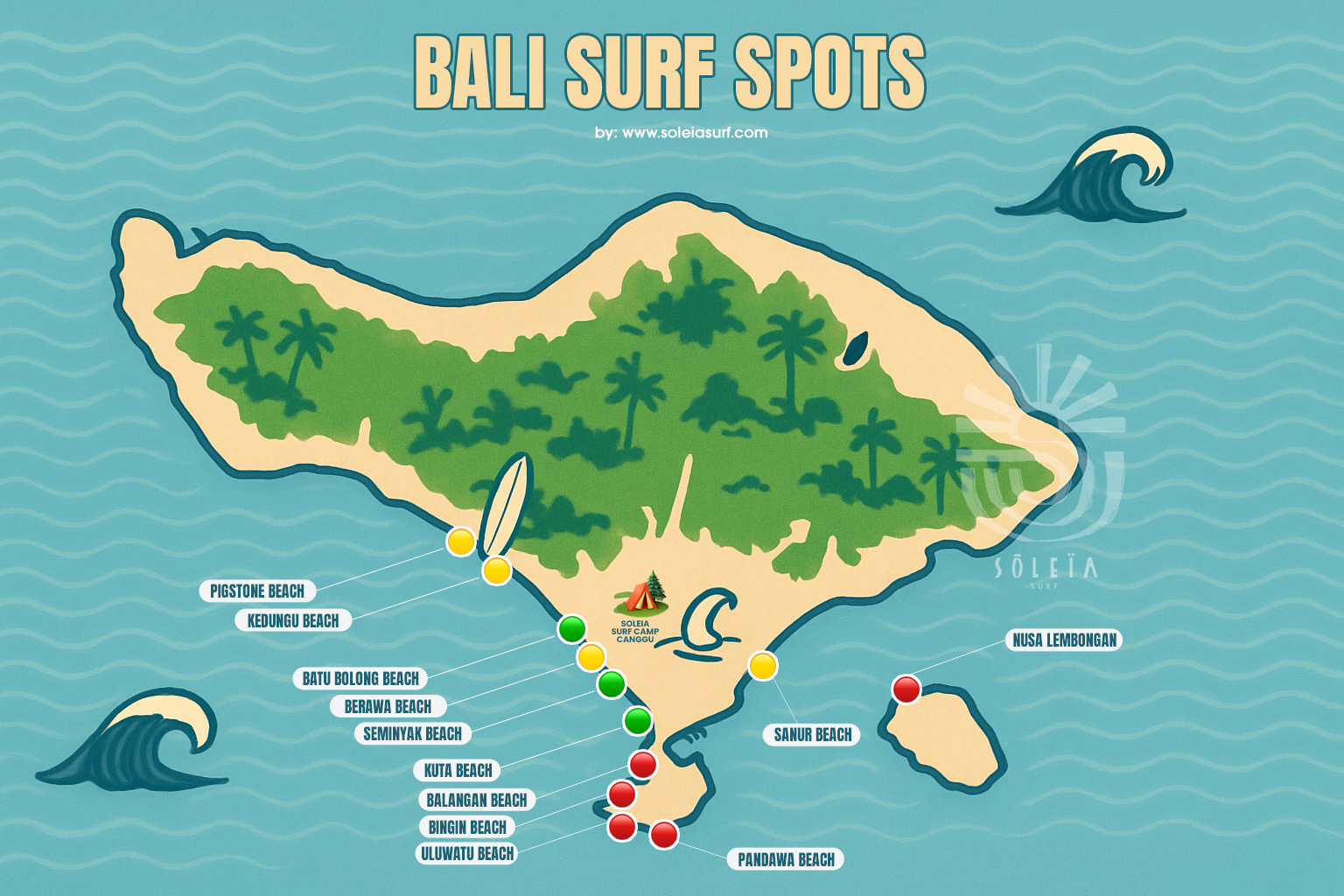
Key to Map Icons:
- x = Beginner Friendly
- x = Intermediate
- x = Advanced/Expert
2. Breakdown by Skill Level
x : Best Bali Surf Spots for Beginners
Perfect for those just starting out, these spots offer gentle, forgiving waves and a more relaxed atmosphere.
Kuta Beach
- Wave Type: Gentle, slow-peeling beach break
- Bottom: Sand
- Best Tide: Mid to high
- Best Swell: Small (2-4 ft)
- Crowd Factor: High but spread out
- Why it's good: The most famous learner wave in Bali. Forgiving waves, plenty of surf schools, easy paddle out.
Seminyak Beach
- Wave Type: Mellow beach break
- Bottom: Sand
- Best Tide: Mid to high
- Best Swell: Small (2-4 ft)
- Crowd Factor: Moderate
- Why it's good: Just north of Kuta, it offers similar beginner-friendly conditions with slightly smaller crowds. A great alternative.
Batu Bolong (Canggu)
- Wave Type: A-frame peaks
- Bottom: Sand and reef mix
- Best Tide: All tides
- Best Swell: Small to medium (2-5 ft)
- Crowd Factor: Very high
- Why it's good: Long rides and a vibrant atmosphere. The mix of sand and reef provides a great transition from pure beach breaks.
x : Best Bali Surf Spots for Intermediate Surfers
Ready to move down from the foam board? These breaks offer more challenge and shape to help you practice turns and build confidence.
Kedungu
- Wave Type: Beach break with both left and right peaks
- Bottom: Sand
- Best Tide: All tides
- Best Swell: Medium (3-5 ft)
- Crowd Factor: Low to Moderate
- Why it's good: A fantastic and less crowded alternative to Canggu. Offers more power than Kuta without the heavy crowd pressure of more famous spots. Perfect for intermediates looking for space.
Berawa (Canggu)
- Wave Type: A faster, hollower right-hand river mouth wave
- Bottom: Sand and reef
- Best Tide: All tides
- Best Swell: Medium (4-6 ft)
- Crowd Factor: High
- Why it's good: The natural next step from Batu Bolong. Berawa offers more power and a longer, faster wall for practicing turns.
Sanur Reef
- Wave Type: Soft, rolling right-hand reef break
- Bottom: Flat reef
- Best Tide: Mid to high
- Best Swell: Small to medium (2-5 ft)
- Crowd Factor: Moderate
- Why it's good: An excellent introduction to reef breaks. The wave is mellow and forgiving, making it ideal for intermediates to get used to a reef bottom without the fear of a heavy wave.
Pig Stone
- Wave Type: Left-hand reef break
- Bottom: Reef
- Best Tide: Low to mid
- Best Swell: Medium (4-6 ft)
- Crowd Factor: Low
- Local Tip: A lesser-known gem near Kedungu Beach. Offers a fun, rippable left that is less intense than its famous neighbors.
x : Best Bali Surf Spots for Advanced Surfers
For those who live for the barrel and have total control of their board. These waves are powerful, fast, and demand respect.
Balangan Beach
- Wave Type: Long, fast left-hand reef break
- Bottom: Reef (mostly flat)
- Best Tide: Low to mid
- Best Swell: Medium to Large (4-8 ft)
- Crowd Factor: Moderate to High
- Why it's good: A classic Balinese left. Can be rippable on the shoulder when smaller and barreling on the take-off when bigger. A must-surf for advanced riders.
Bingin
- Wave Type: Technical and hollow left, often barreling
- Bottom: Sharp reef
- Best Tide: Low
- Best Swell: Medium to Large (4-8 ft)
- Crowd Factor: High
- Why it's good: A hollow and powerful wave that demands precise take-offs. The reward is a fast, barreling ride. Not for the faint of heart.
Nusa Lembongan (e.g., Shipwrecks, Lacerations)
- Wave Type: World-class, heavy reef breaks
- Bottom: Sharp, shallow reef
- Best Tide: Depends on the break
- Best Swell: Large (6-10 ft+)
- Crowd Factor: Can be heavy
- Why it's good: Requires a boat trip but offers some of the most challenging and rewarding waves in the area. Shipwrecks is a punishing left, while Lacerations is a terrifying right. Experts only.
Pandawa Beach
- Wave Type: Powerful left and right-hand reef breaks
- Bottom: Reef
- Best Tide: All tides
- Best Swell: Medium to Large (4-8 ft)
- Crowd Factor: Growing, but less than Bukit classics
- Why it's good: Once a secret spot, Pandawa now offers powerful, long-walled waves that can handle a bigger swell. The cliff-side backdrop is stunning.
Uluwatu
- Wave Type: World-class left-hand reef break
- Bottom: Sharp reef
- Best Tide: Low to mid
- Best Swell: Large (4-8 ft+)
- Crowd Factor: Very high
- Why it's good: The legendary wave. Offers multiple sections from The Peak to Racetracks. A true test of a surfer's skill, positioning, and etiquette.
3. Seasonal Guide: When to Score the Best Waves
Dry Season (April – October)
- Conditions: Offshore winds, bigger swells
- Best For: Experienced surfers
- Top Spots: Uluwatu, Padang Padang, Bingin
- Water Temp: 24-26°C (75-79°F)
- Crowds: Heavy at popular breaks
Wet Season (November – March)
- Conditions: Onshore winds, smaller swells
- Best For: Beginners and intermediates
- Top Spots: Kuta, Canggu, Sanur
- Water Temp: 28-30°C (82-86°F)
- Crowds: Still busy but more manageable
Monthly Swell Chart
| Month | Avg. Swell (ft) | Best Coast | Notes |
|---|---|---|---|
| Jan | 3-5 | East | Consistent small waves |
| Apr | 4-6 | Both | Transition month |
| Jul | 6-8+ | Bukit | Peak season |
| Oct | 5-7 | Both | Best overall month |
4. Local Knowledge: Tips for Surfing Bali
Navigating the Lineup
- Respect the hierarchy: Locals and regulars get priority
- Don't drop in: This is especially important at crowded spots
- Apologize if you make a mistake: A simple “sorry” goes a long way
Staying Safe in the Water
- Reef protection: Always wear reef booties at sharp breaks
- Current awareness: Many spots have strong currents
- Crowd management: If it's too crowded, consider a less popular break
Essential Gear
- Board type: Bring a quiver if possible (shortboard, step-up, funboard)
- Reef booties: Essential for reef breaks
- First aid kit: For reef cuts and scrapes
- Sun protection: Strong tropical sun requires 50+ SPF
5. Beyond the Popular Breaks: Hidden Gems
Lesser-Known Bali Surf Spots
Green Bowl
- Location: South Bukit
- Wave Type: Fast left and right barrels
- Skill Level: Advanced
- Special Note: 300 steps down to beach
Medewi
- Location: West Bali
- Wave Type: Long left-hand point break
- Skill Level: Intermediate to advanced
- Special Note: 30+ second rides possible
Serangan
- Location: South East Bali
- Wave Type: Left-hand reef break
- Skill Level: Intermediate
- Special Note: Works on all tides
FAQ: Bali Surf Spots
Batu Bolong in Canggu and Uluwatu are generally the most crowded breaks, especially during peak season.
While not mandatory, many experienced surfers wear helmets at sharp reef breaks like Padang Padang or Shipwrecks.
Yes! Kuta Beach and parts of Canggu offer beach breaks, though most of Bali's famous waves are reef breaks.
Renting a scooter is the most flexible and affordable option ($5-7/day). For groups or those with boards, hiring a driver with board racks is recommended ($35-50/day).*
Absolutely! Bali is one of the best places in the world to learn with warm water, consistent waves, and numerous surf schools.
While there are no official women-only breaks, some surf schools and camps offer women-only classes and retreats.
Conclusion: Your Bali Surf Adventure Awaits
Bali truly offers a wave for every surfer, on every day of the year. From the gentle beginner waves of Kuta to the world-class barrels of Uluwatu, this island provides an unparalleled surfing experience.
The key to scoring great waves in Bali is understanding the seasons, respecting the local culture, and choosing breaks appropriate for your skill level. With this guide in hand, you're ready to plan the ultimate Bali surf trip.
Ready to experience Bali's waves with local experts? Join our Surf Packages Holidays at Sōleïa Surf Camp for access to the best waves with none of the stress!
All Categories
Recent Posts
Intermediate Surfer Skills: 7 Key Areas to Master Next
Surf Levels: How to Understand Where You Are with Your Surfing
Top 5 Surf Camps in Canggu Compared: Price, Location & Vibe
Start From € 5125,-
Our 12-weeks
Surf Academy Program in Bali

